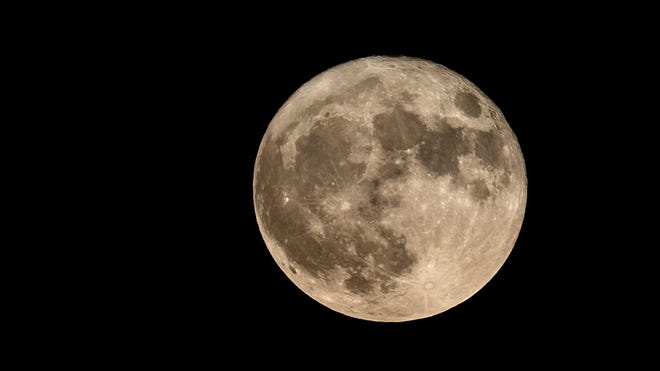A Super Blue Moon Lights Up the Night: A Rare Celestial Event Explained

Get ready for a celestial spectacle! On Monday night, a rare combination of lunar events will illuminate the UK skies: a full moon that's both a supermoon and a blue moon. This captivating sight, dubbed a "super blue moon", is a rare occurrence, with the last one gracing our skies in 2023.
But what exactly makes this moon so special? Let's delve into the intricacies of these astronomical phenomena.
What is a supermoon?
A supermoon arises when the moon's orbit brings it closer to Earth than usual, coinciding with a full moon phase. This proximity makes the moon appear larger and brighter than normal. The term "supermoon" was coined by astrologer Richard Nolle in 1979.
While the moon's orbit isn't perfectly circular, its distance from Earth varies. When the moon reaches its closest point, approximately 226,000 miles away, the full moon appears 30% brighter and 14% larger than a typical full moon.
What is a blue moon?
The term "blue moon" can be a bit confusing. There are actually two types: seasonal and monthly. This Monday's full moon is a seasonal blue moon.
A seasonal blue moon occurs when a season boasts four full moons instead of the usual three. The third of these four full moons is then designated as the blue moon.
The other definition, which stems from a misunderstanding of the original, is the monthly blue moon. It refers to the second full moon that occurs within a single calendar month.
Regardless of the type, blue moons are rare due to the discrepancy between the moon's 29.5-day cycle and the variable length of our months (28, 29, 30, or 31 days).
How rare is a super blue moon?
While blue moons occur every two or three years on average, the frequency of super blue moons varies. Depending on the specific definitions used, the wait between these celestial events can range from 10 to 20 years.
When can we see the next super blue moon?
While January 2037 is often cited as the next super blue moon, the exact timing can fluctuate depending on the definition of both supermoons and blue moons. It's possible that another super blue moon could grace our skies before then.
A Spectacle Not to Be Missed
Whether you're an avid stargazer or simply curious about the wonders of the cosmos, the super blue moon is an event not to be missed. Take a moment to step outside and witness this rare celestial spectacle, a reminder of the magnificent universe we inhabit. Remember, though, the moon itself is unlikely to actually appear blue â any blue hues you see in photographs are usually the result of camera filters or editing.





